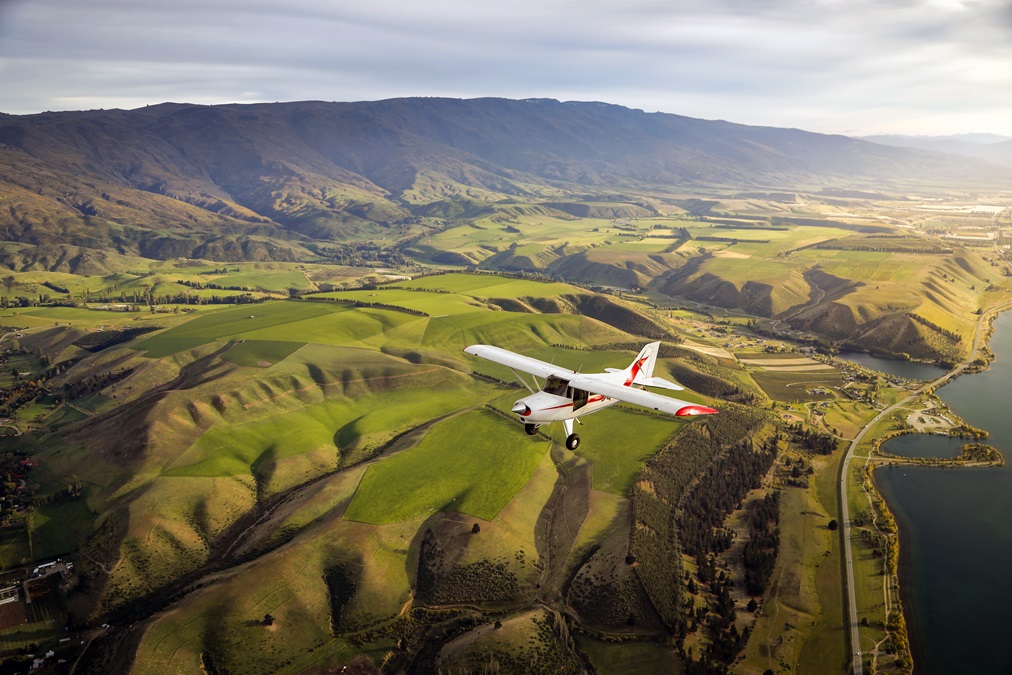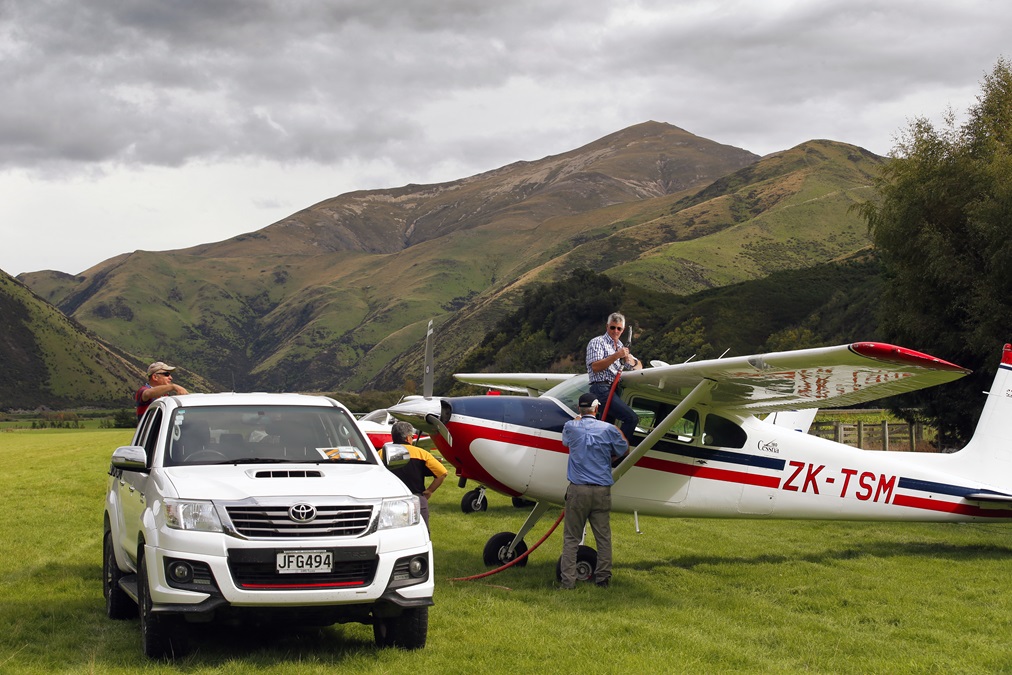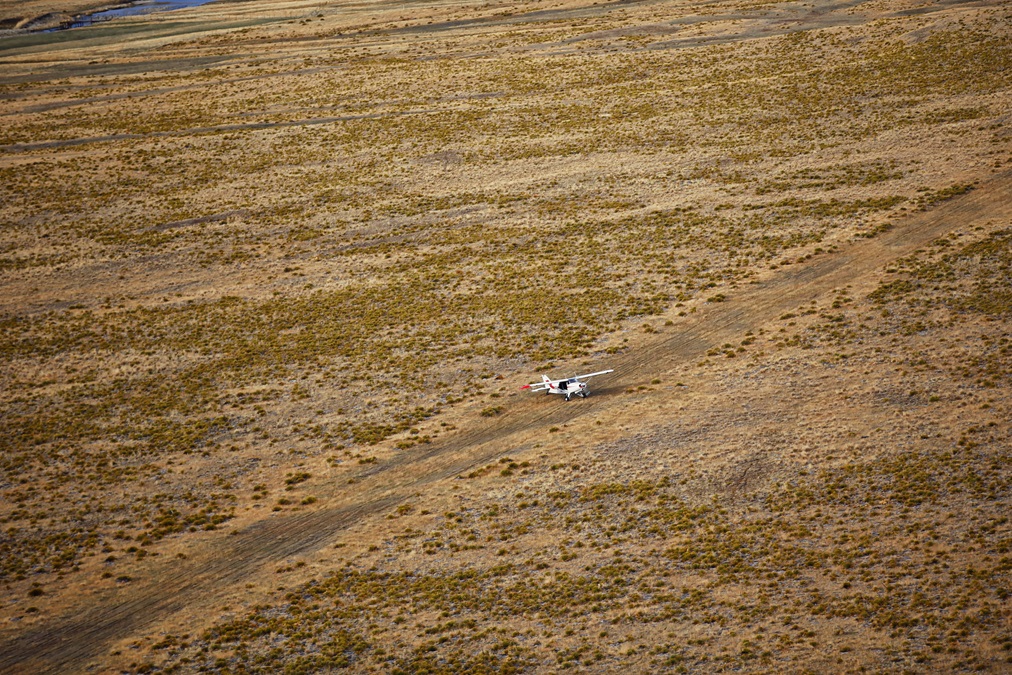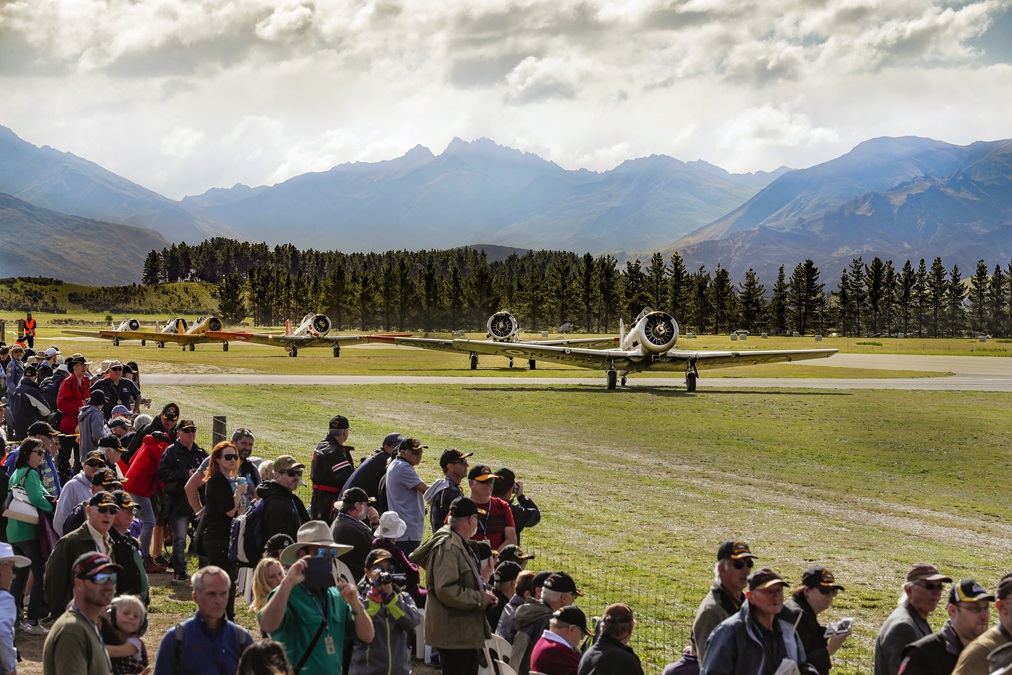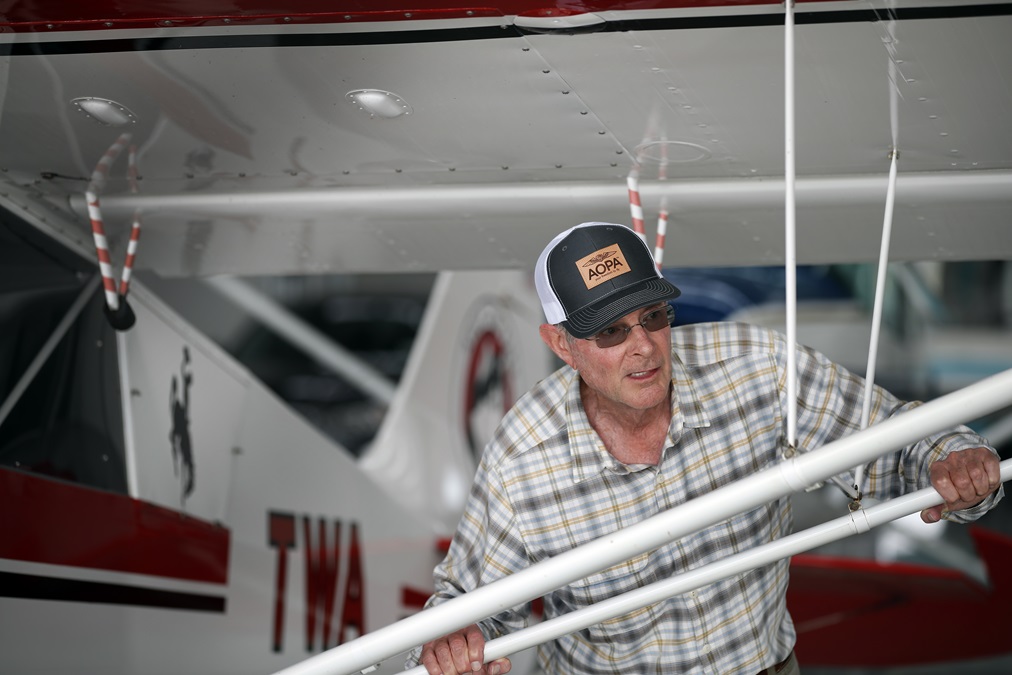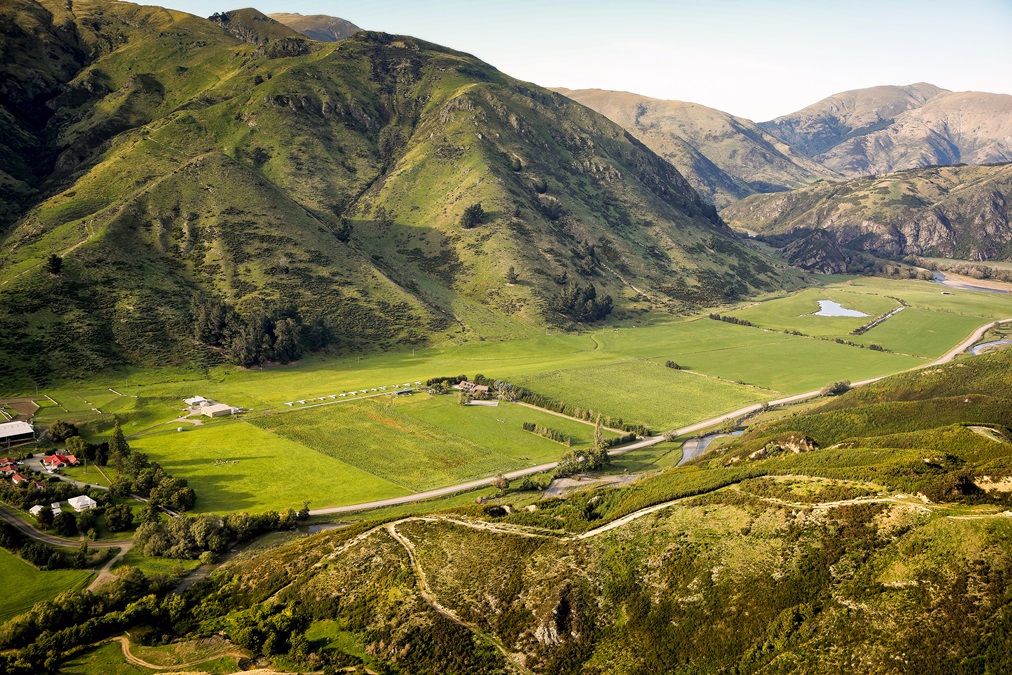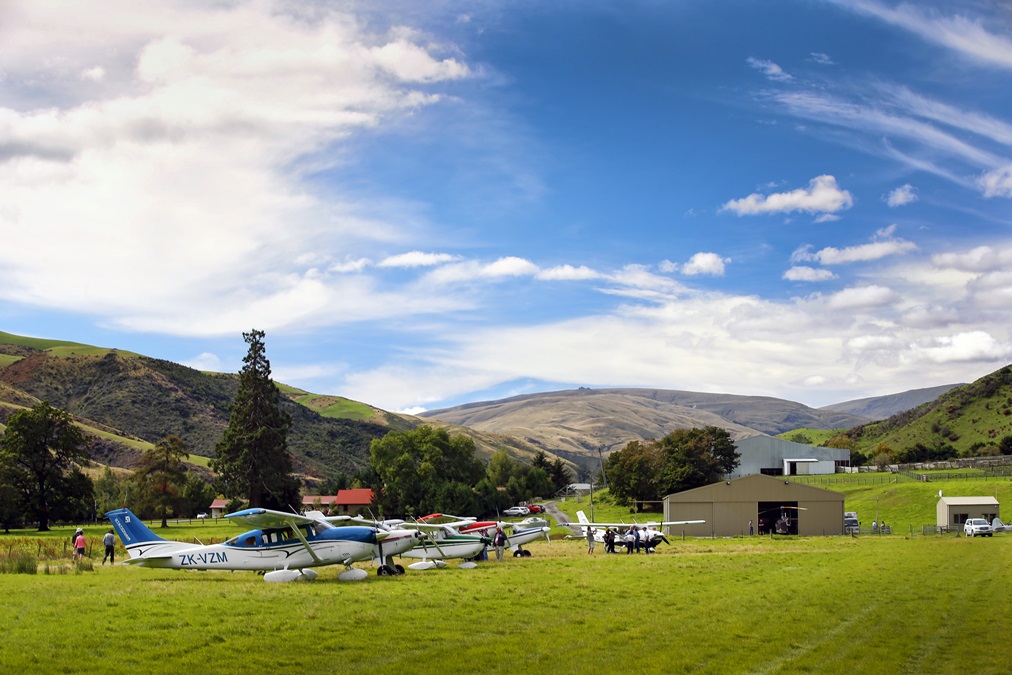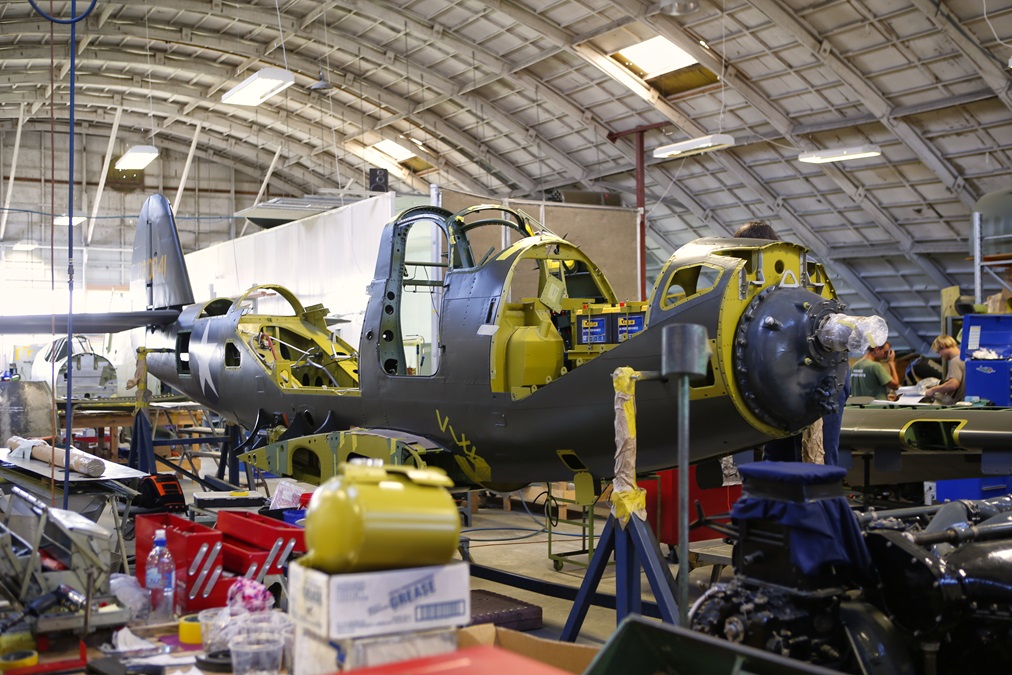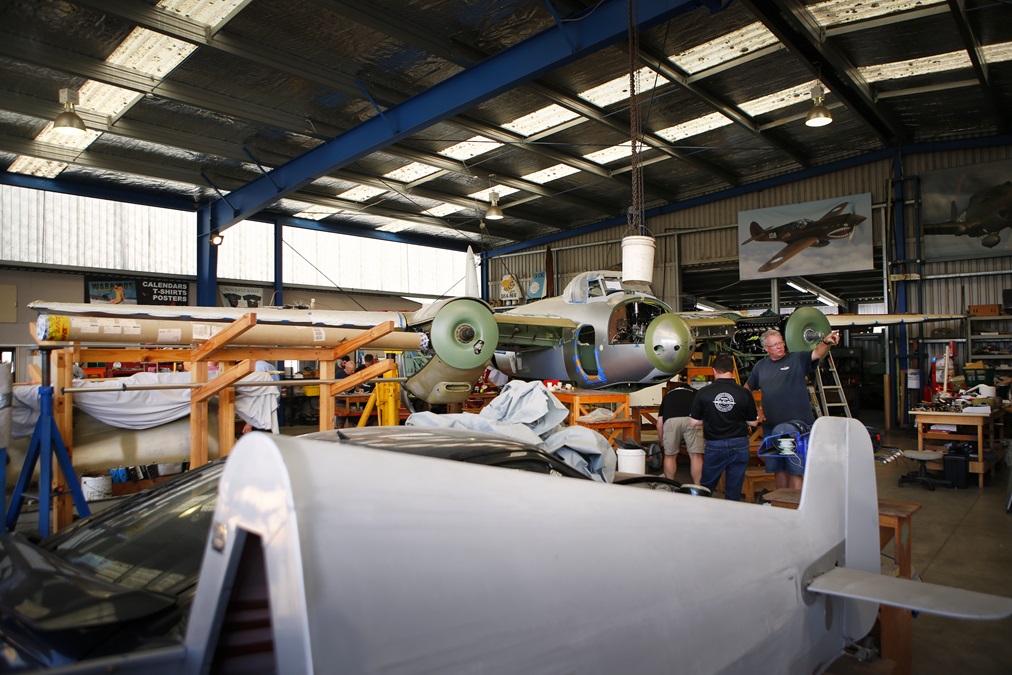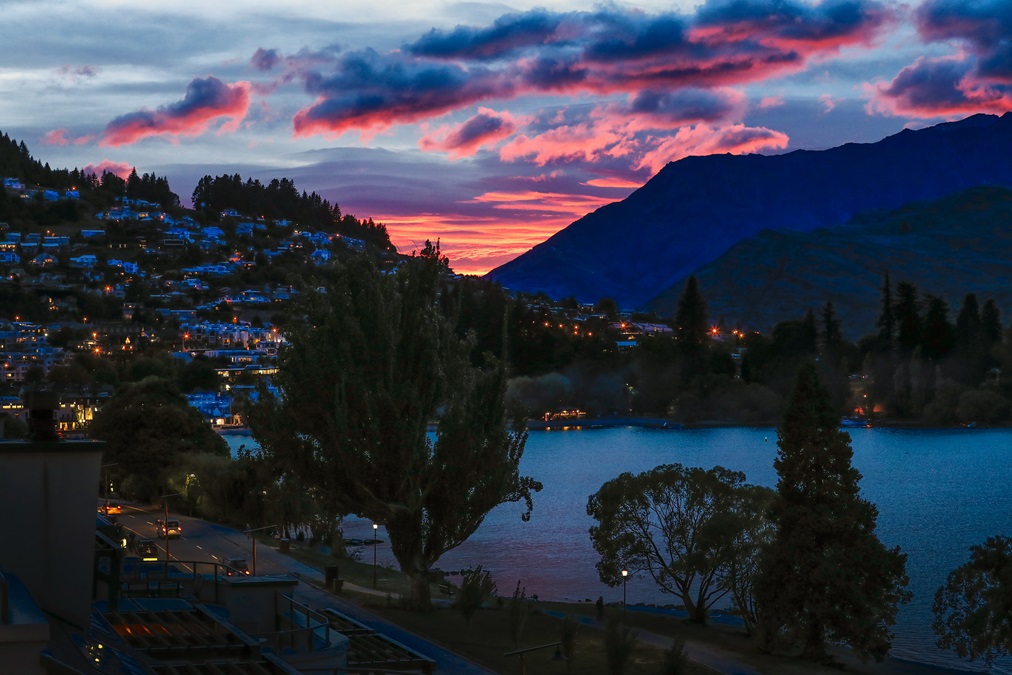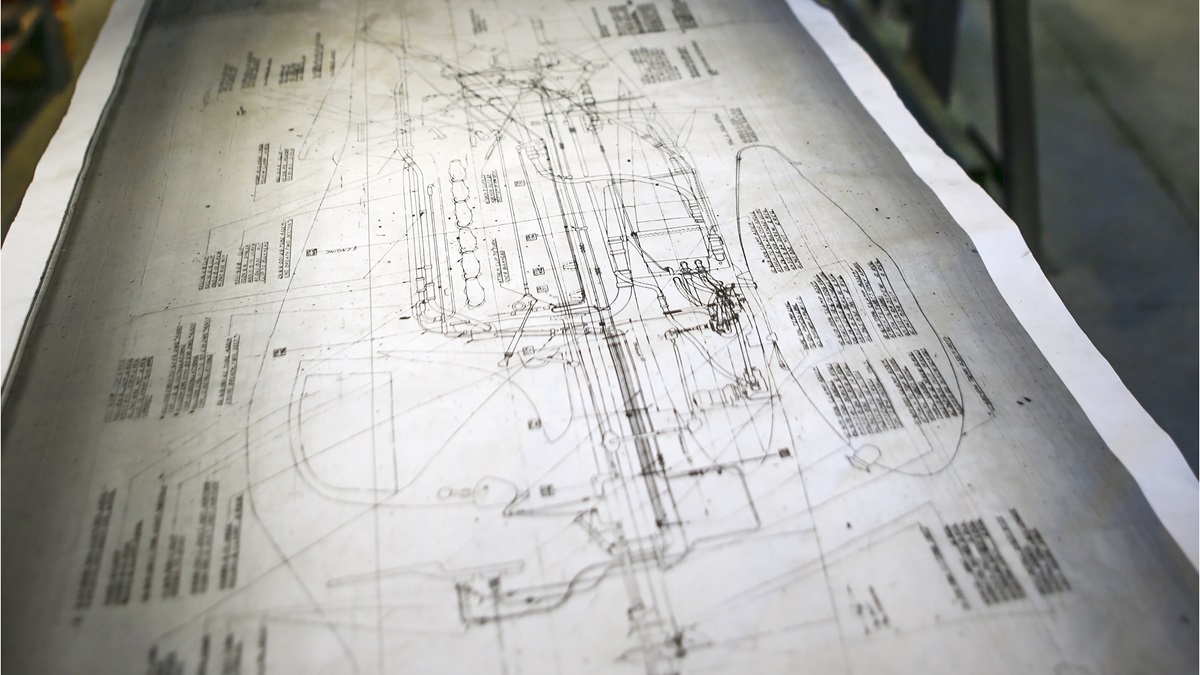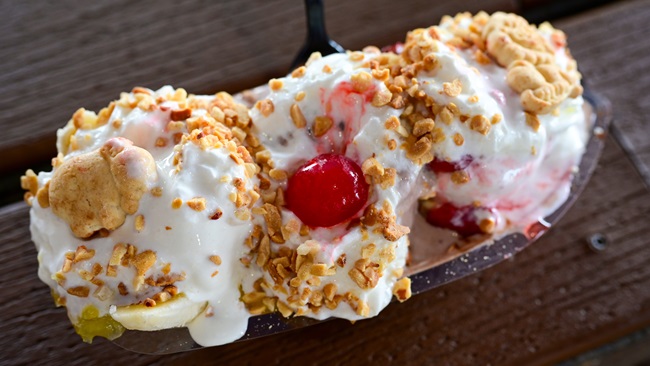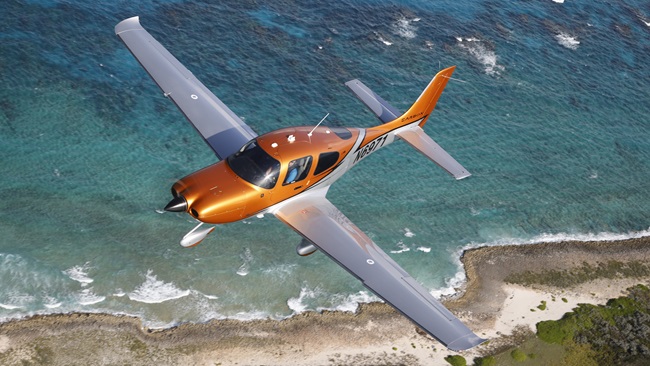A pilot's playground
The zeal of New Zealand flying

The airstrip is just one of numerous landing sites around the 82,000-acre Nokomai Station, home to some 22,000 sheep—except at spring lambing, when that number practically doubles. On this clear early fall day, the ewes graze the steep hillsides, looking like bales of cotton scattered around the slope. An Airbus helicopter lifts off en route to one of the remote helipads around the property, where owner Brian Hore and crews stop in to check the flock and occasionally drop off dogs to herd the sheep from one pasture to another.
The visitors are a part of the World Assembly of the International Council of Aircraft Owner and Pilot Associations, taking a break from the biennial event taking place in Queenstown on New Zealand’s South Island. Local pilots have mustered a fleet of airplanes to fly in many of the attendees for a tour of the impressive sheep station. As we have found with pilots all over the island nation, they are anxious to showcase their impressive country and always looking for a way to say “yes” to our myriad requests for photo flights and aviation experiences.
The Warbirds Over Wanaka airshow is a showcase for the remarkable workmanship of New Zealand craftsmen.Among the most spectacular of our experiences is a visit to the Warbirds Over Wanaka airshow, which occurred the day after the World Assembly ended. The biennial airshow is the largest gathering of warbirds in New Zealand and is a showcase for the remarkable workmanship among the restoration craftsmen in the nation. In recent years, New Zealand has gained global attention for its network of warbird restorers and the Wanaka show is one chance for them to show off.
With pristine mountains as its backdrop, the show every day features bevies of warbird acts, including Harvards, Yaks, and Mustangs as well as unusual aircraft such as the Avro Anson MK1, the de Havilland Devon, the de Havilland DH.89 Dragon Rapide/Dominie, and de Havilland Fox Moth. A highlight was the Messerschmitt 109 Buchon, painted in the scheme from its role in the popular 2017 film Dunkirk. The next Warbirds Over Wanaka airshow is April 10 through 12, 2020. Mark your calendar.
The scenic Wanaka area is just one place to explore by air. Local pilots allowed us to fly their airplanes all over the South Island, which includes some of the youngest and most scenic terrain on the planet. The 300-mile Southern Alps mountain range creates a spine down the South Island, with Mount Cook as its highest point—at 12,218 feet msl. But second highest Mount Aspiring is the place to be. At 9,951 feet, it is easily approachable even in a single-engine piston-powered airplane, its craggy peak looking like a pointy hat. While relatively shorter than the American Rockies, the Southern Alps are particularly impressive because you can see them rise up from sea level—whereas the bases of the Rockies are often at 5,000 feet msl—meaning we get to see only the top few thousand feet.
And because they are lower, the Southern Alps are very flyable and offer amazing views from the beach, to the glaciers, to the deep valleys and fjords. We spent a day in a Cessna Turbo 182 with local pilots Paul Hood and Graeme Donald, and with Ian Sinclair in his beautifully maintained 1966 Cessna 172. Among our stops was Omarama—a wide, long grass runway that is home to many international gliding records and a hub of soaring activity in New Zealand.
Running mostly north and south and with winds primarily out of the west, the Southern Alps create world-class soaring conditions—conditions sought by sailplane enthusiasts from around the world, many of whom come for weeks at a time.
One thing you’ll notice about New Zealand, they use grass a lot more than we do here in the States—and not just for runways. Grass taxiways for general aviation are found at many airline airports, including Queenstown. Queenstown is the fourth busiest airport in New Zealand, with a steady flow of airliners bringing skiers, hikers, and other outdoor enthusiasts. Active tourism is a big deal in the region. After cranking up Hood’s 182, I taxi toward the active runway, passing a ramp full of airliners, and soon find myself on a grass taxiway cutting across the airport. The turf excursion is convenient and just fine for an airplane like a 182—or most any light airplane. Makes you wonder why we spend so much on pavement in the States.
Lots of airports, spectacular scenery, good weather, and wildly enthusiastic pilots make New Zealand an aviator’s playground.Similarly, a few days later, flying on the North Island, we are with Jack Schulte in his 182. Schulte is an American married to a New Zealander. They spend half the year at their home in Afton, Wyoming, in the shadows of the Grand Tetons, and half the year at their home on the beach at Whakatane on the Bay of Plenty on the North Island. You can probably guess where they go each season. Shulte keeps an Aviat Husky and a 182 at each location and flies one or the other nearly every day.
After motoring up the coast from Whakatane to Tauranga—an airline airport—we touch down on the grass runway parallel to paved Runway 25, roll up onto a paved taxiway, and snake our way between two rows of hangars to a grass parking spot next to a hangar. We spend a couple of hours poking around the unusual airport, with all sorts of airplanes under construction and a cadre of warbirds. The Classic Flyers aviation museum offers biplane rides and a small café. A few yards away, Classic Flight Training has big signs on its hangar offering tailwheel and aerobatic training and flights in everything from Piper Cubs to a Tiger Moth, Chipmunk, a Stearman, a Harvard—plus, simply, “Jets.” A Stearman peers out at us from inside the hangar, the doors partially open. If “jets” seems out of your league, you can try on a Pacific Aerospace CT–4 or a Victa T3a AirTourer. And, if you’re like me, you have to look those up. If the two-place Victa seems a little too cozy for you, you can always rent the DC–3 for an outing with friends. They do like their airplanes in New Zealand.
Heading back south from Tauranga we tool along the coast past scads of kiwifruit orchards. They are easily identifiable from the air because they are inside hedgerows made up of much taller trees to protect the fruit trees from the wind. And, just so you know, when New Zealanders are referred to as “Kiwis,” it is referencing the bird, not the fruit. Because it’s a flightless bird, the reference doesn’t, well, fly so well with New Zealand pilots.
Later, we team up with Peter Rutledge, a friend of Schulte’s who owns AeroHire, a flight school at Whakatane, for a photo shoot of Schulte’s Husky over White Island, an active volcano 30 miles off the coast in the Bay of Plenty. The island is white because of all of the sulfur spewed by the volcano. Flying the Husky, I focus on the Cessna a few feet away as photographer Chris Rose shoots photos and video out the Skyhawk’s window. I know we’re close to the island, though, because of the sulfur smell on the downwind side. I catch a few glimpses of the volcano, steam still rising from the caldera. It last erupted on September 26, 2017. What are the chances it will again today? We ponder that briefly—very briefly—and then head for shore.
A day later we arrive at what seems like Warbird Central for New Zealand. Ardmore Airport, located just south of Auckland, is one of the busiest general aviation airports in the county and is home to four flight schools, a large flying club, a restaurant, several restoration shops, and the New Zealand Warbird Association. The airport is one of many on the North Island built by U.S. forces during World War II as fallback positions in case the Japanese took over Australia. Fortunately that didn’t happen, and the Ardmore community had the good sense to protect their airport and turn it into a thriving GA facility.
The Warbirds Association is the home to some 35 aircraft, many of them warbirds and all of them privately owned. The large hangars housing the collection are jointly owned and the members share resources and skills to keep the fleet flying. One newly established hangar houses airplanes built for World War I and through the 1930s. More modern aircraft are amassed in a large, brightly lit hangar with a mezzanine for events and educational experiences.
Just down the ramp at AVspecs, Managing Director Warren Denholm toils away day after day on his latest pride and joy: the building of a de Havilland Mosquito. There are only a handful of Mosquitos in flying condition in the world, and Denholm built most of them. Like his previous effort, this one is being built for an American. Having seen warbirds all over the islands, by now I’m not surprised at the stunning quality of the work. The Mosquito is unusual because it is made mostly of wood, a change necessitated during the war because metal was scarce. The designers came up with painstaking methods of bending and shaping plywood to create the airframe. The result is a remarkably fast and lightweight multi-mission aircraft that was a favorite among World War II pilots. Two 1,650-horsepower Rolls-Royce engines propel it along at more than 400 miles per hour, allowing it to outrun just about anything in the sky during the war. With just one other crew member—a navigator—the aircraft was efficient and able to deliver medium bomb loads, come back, and make another run while larger bombers were still just starting their first bombing runs. Still in pieces when we visited in April, the Mosquito was scheduled to fly in late 2018.
Across the airport, Paul McSweeny shows us around Pioneer Aero where he and his craftsmen are at work on an equally impressive project, a Bell P–39 Airacobra, also for an American customer. The pristine fuselage sits on a wooden jig; the massive 1,300-horsepower Allison V-12 engine rests on a pallet nearby. Eventually the big engine will be nestled into the center fuselage, a long two-piece driveshaft passing beneath the cockpit to the propeller. During the war, a 37 mm M4 cannon in the nose fired through the propeller hub.
This particular airframe was left in the jungle in the South Pacific after the war. By the time it was pulled out, most of the metal had corroded away. McSweeny says only about 50 percent of the metal by weight will be original by the time he is finished. While he is proud of his craftsmen, he admits that the castings and forgings of the original airplane were “masterful.” “We can’t replicate them,” he says.
The project progressed rapidly and the airplane was beginning taxi tests when we followed up with McSweeny in December, with first flight expected by Christmas.
We find throughout New Zealand that pilots go out of their way to showcase aviation in their country. Ardmore pilot Phil Pacey generously taps his friend Steve Horne to show us around the Auckland region. I climb aboard Pacey’s Cessna 210 while photographer Chris Rose joins Horne in his Cessna 182 with a Peterson’s Performance Plus King Katmai mod kit on it; in other words, it has a canard. Our excursion takes us around Auckland and ultimately to Meadowlark Strip in Waiau Pa, a grass field stuffed between sheep pastures. Inside a nondescript hangar on the edge of a pasture, Tony Antonievich operates Auto & Aero Restoration, a funky little operation that specializes in hot rod and airplane projects. Inside, though, there’s an eclectic collection of all sorts of vehicles under various stages of restoration, from a travel trailer (a caravan in Kiwi parlance), to a firetruck, a couple of hot rods, and a Boeing Stearman. Antonievich, a commercial helicopter pilot and airplane mechanic, seems to relish showing visitors around his shop. “It’s not about the cars. It’s about the people you meet as result of the cars. Same thing with the airplanes,” he observes.
While some parts of the world almost seem to shun aviation—governments doing their best to rid the skies of little airplanes and to mop up small airports—New Zealand seems to be a pilot’s playground. Lots of airports, spectacular scenery, good weather, and wildly enthusiastic aviators. They admit to similar problems faced by other pilots—burdensome government regulations, high prices for parts and fuel, landing fees, airspace fees, and plenty of other issues. But the Kiwis roll with it and don’t let the challenges get in the way of a good time. It’s a special place for aviators.
Email [email protected]

